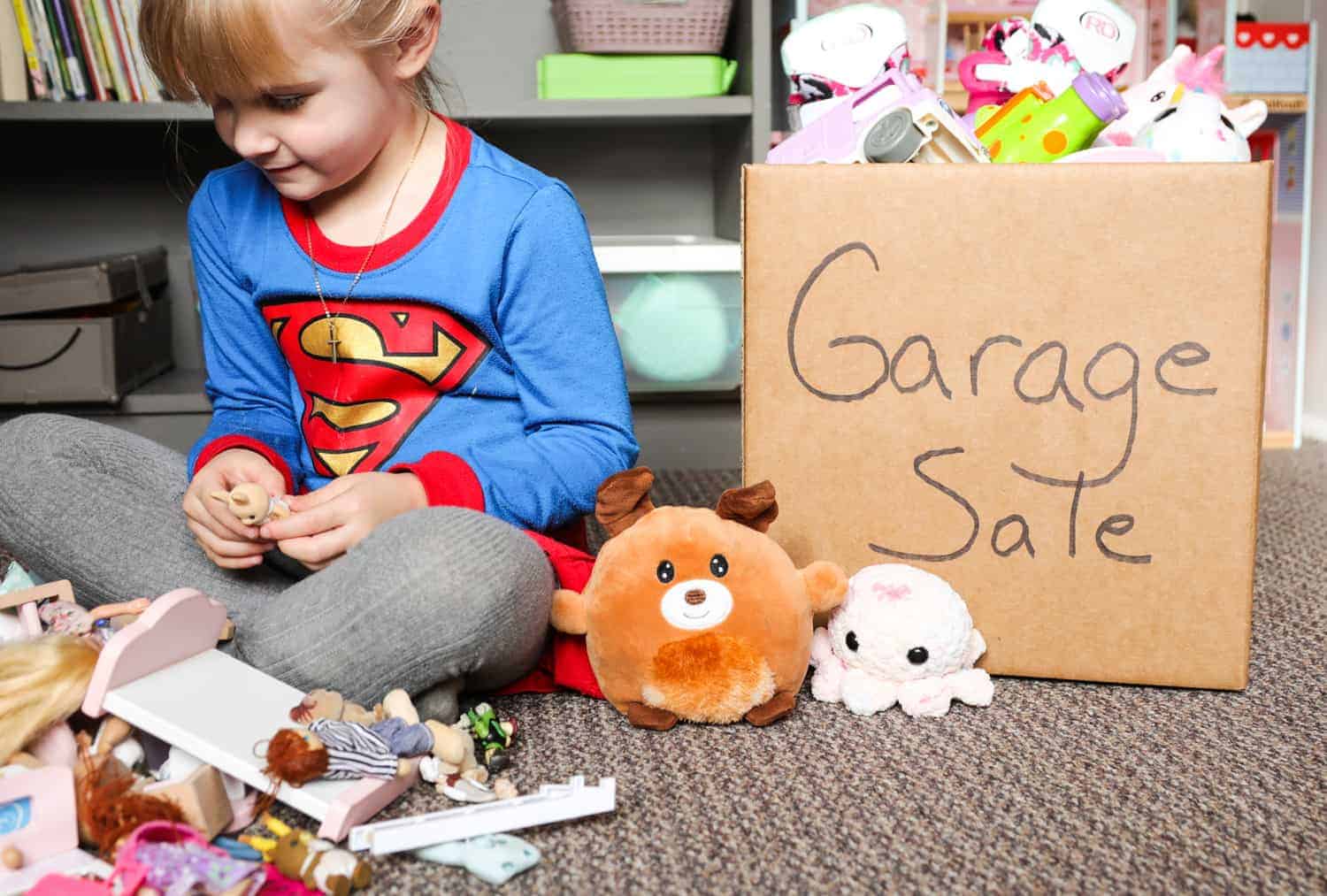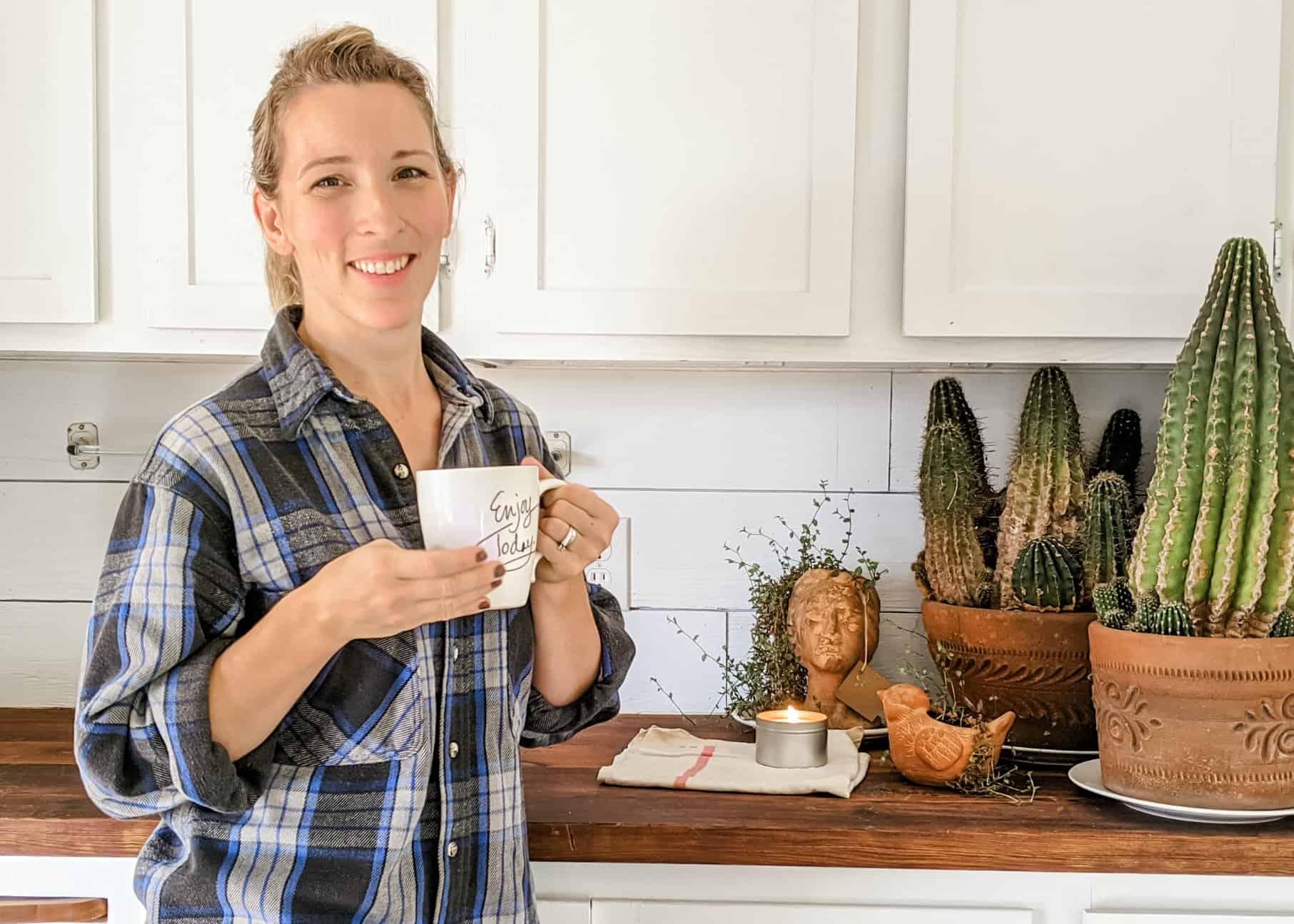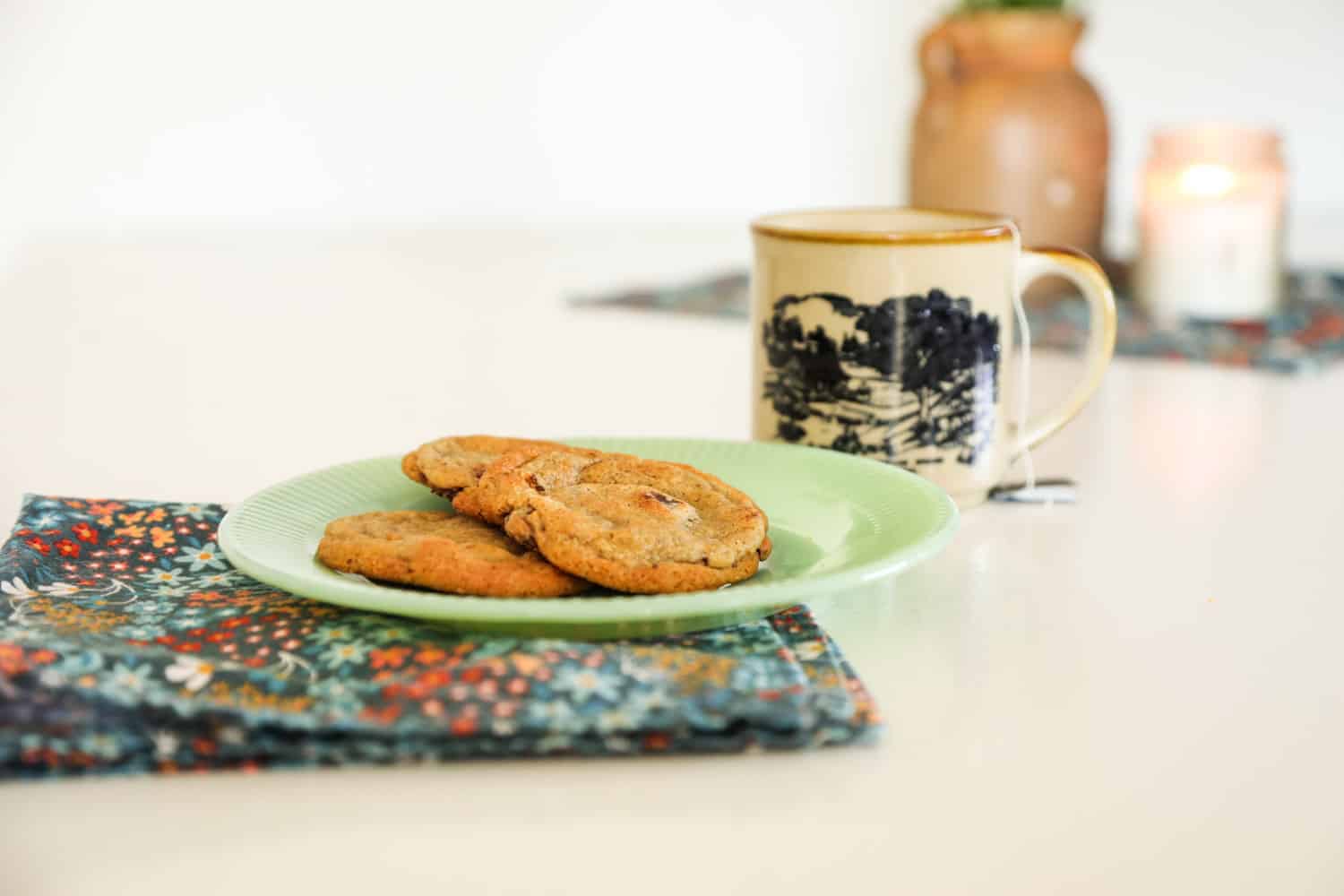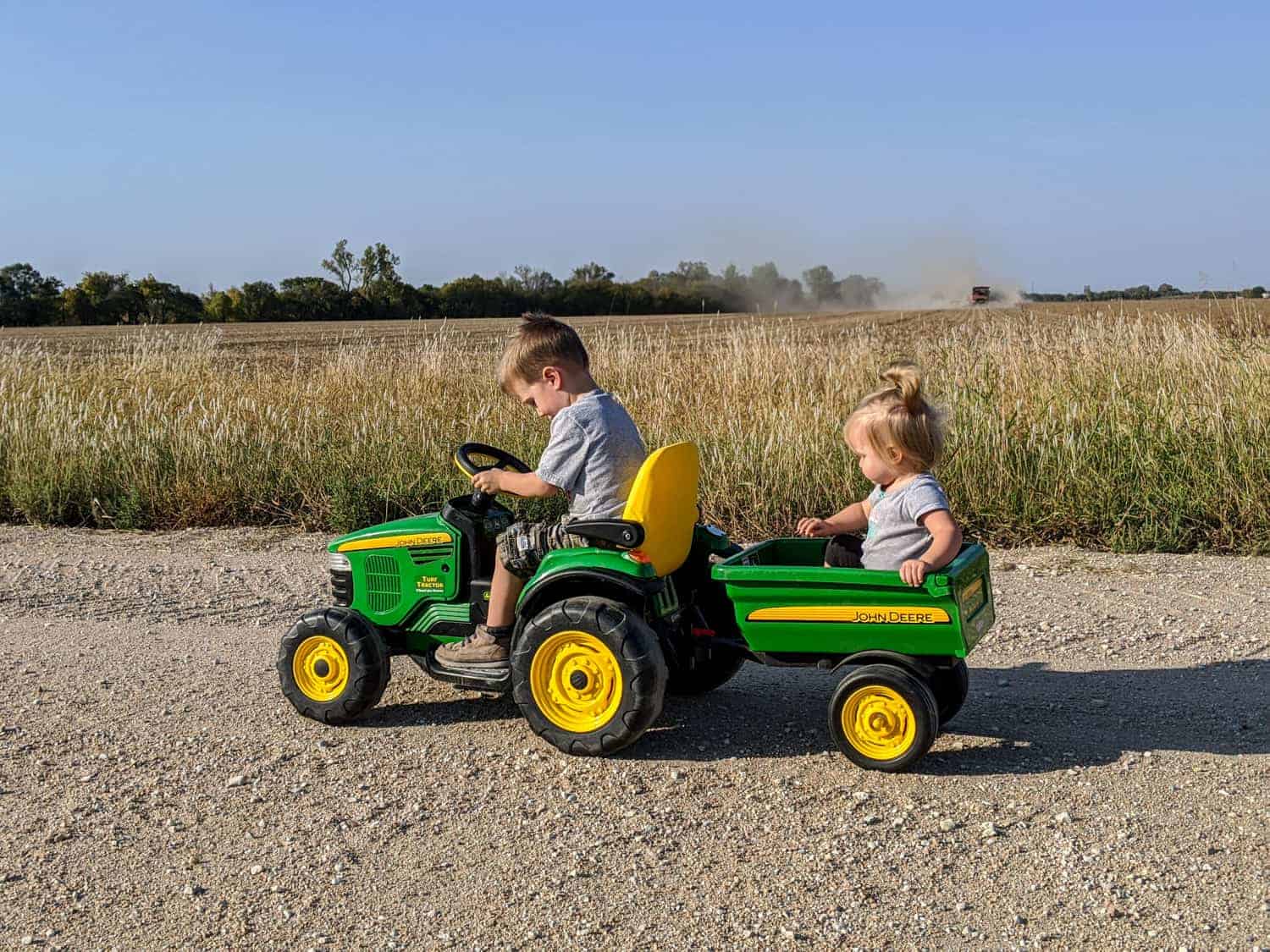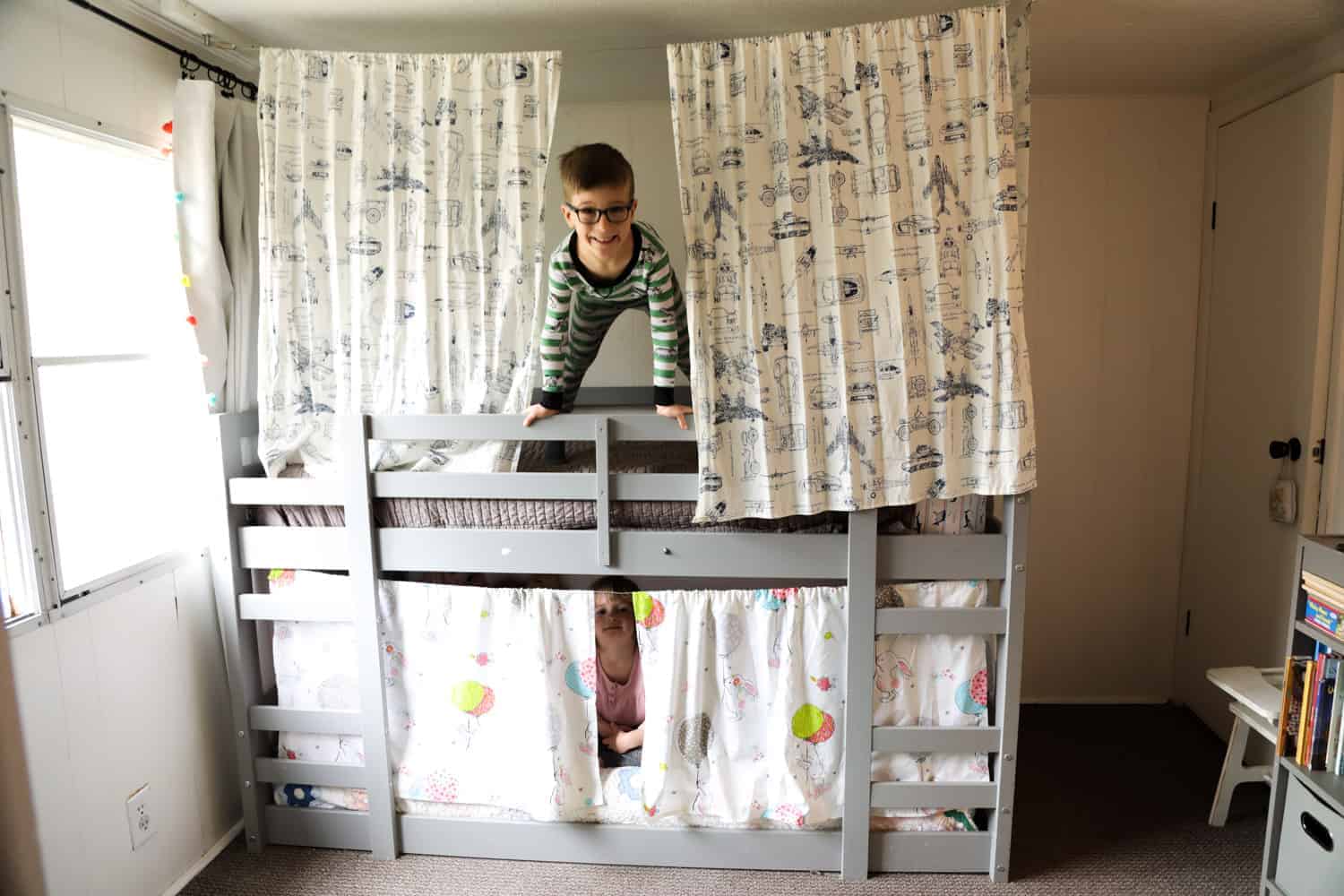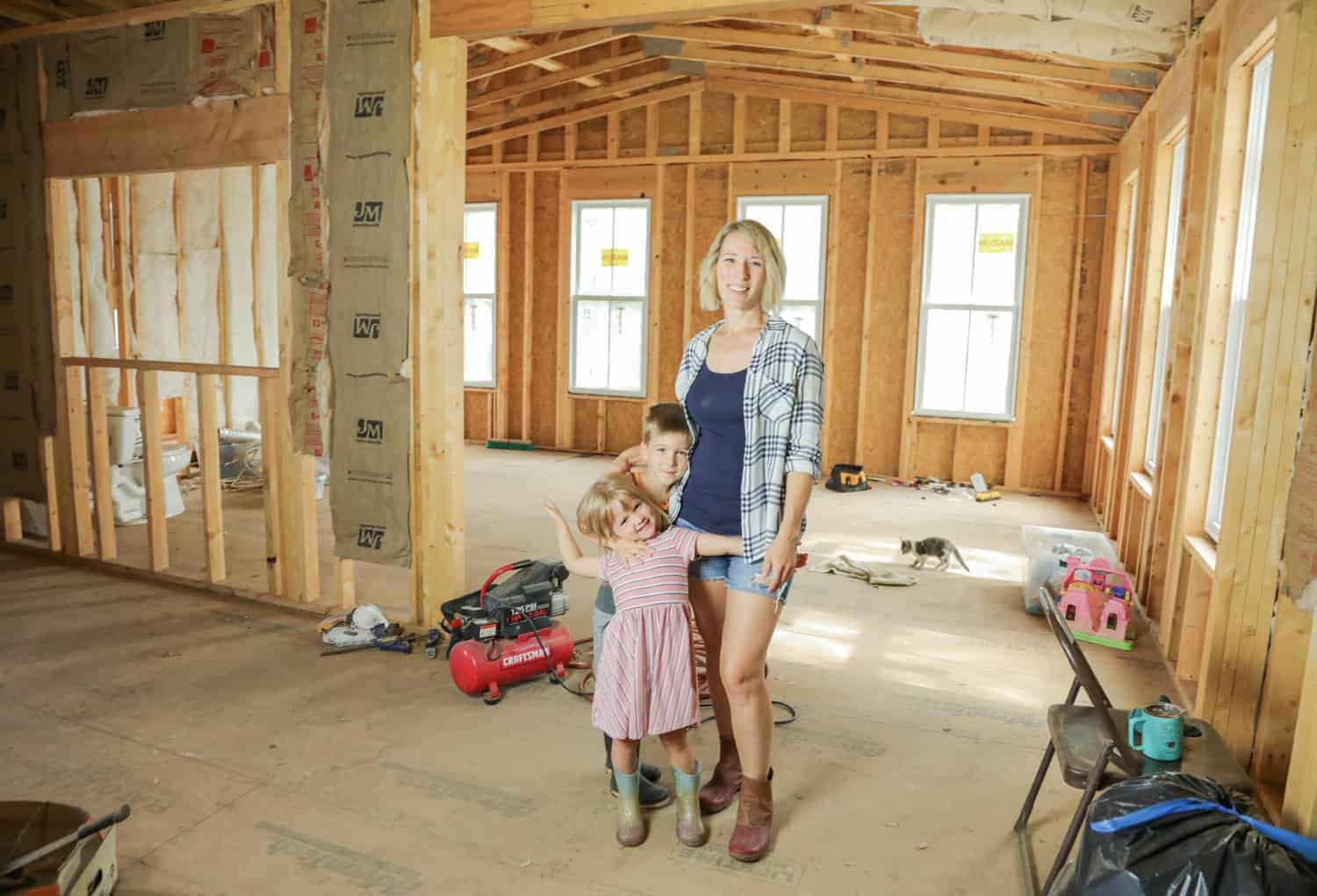You’ve decided to have a garage sale to make some good money while decluttering. But then you enter your kids’ rooms and cringe. Toys, books, games, clothes and don’t get me started on all the stuffed animals!!!! Even if you did sneak some things out while they’re away, chances are your kids will find and reclaim their beloved treasures while you price, set up or hold your yard sale. Never fear! I will give you valuable tips on how to help kids declutter and sell toys at a garage sale.
In This Article
We all know the feeling of walking into our kids’ rooms and being overwhelmed with the piles of clothing, small toys everywhere and random game pieces in the corner. It annoys us daily until we can take it no longer and loudly declare “We are cleaning out some of these toys!!!” Cue the crying and wailing about their stuffed bear (that they haven’t played with for months).
Having made thousands of dollars over a decade of holding garage sales, I am a firm believer in regularly decluttering the house. But I’m also a firm believer in involving my kids in the process. I won’t judge another parents’ decision one bit, but for our family I feel it unhelpful and disrespectful to declutter my kids’ room for them. First, it doesn’t give them the emotional tools they need to clean out when they’re older. Second, I would be furious if my husband came into my space and declared that my belongings were unnecessary while throwing them in a box. It’s the same for our children’s items.
I have given my kids the choice of what items to keep since they were 2 years old. Now that they are 6 and 4, they declutter their room for fun and get excited when the time comes to sell their own toys that are in good condition at a garage sale. One child is naturally inclined to get rid of possessions; one kid leans more towards an emotionally charged pack rat. And BOTH already have the skills to make decisions on what to keep, what to sell without me even being in the room.
Here are the successful steps for how to help kids declutter and sell unwanted toys at a garage sale.
Starting with Attitude
Have a Conversation about the Benefits of Decluttering
When I say conversation, I mean CON-VER-SA-TION. This is not the time to loudly declare you know best or that their room is a disaster (even though it probably is). You want them on your side, so tread lightly and give them lots of power over the decision process.
Some benefits you can give are:
- Less time cleaning up
- Less overwhelm with too many toys…being able to SEE what they love and want to play with
- Make room for different/new toys coming in (ie before Christmas and birthday season)
- Sell toys in good shape for money they can pocket
- Sell or (give) the toy to another kid who will be able to enjoy it.
Set the Example and Talk about Your Process
The greatest way to teach your little kids about decluttering is when YOU declutter. Have a positive attitude, make it fun for yourself, do one small area at a time, state your reasons for cleaning out unused items.
Your kids will see through all your bad attitudes or unwillingness to declutter your own closet and reflect that same mood. So lead by (good) example!
Know Your Kid’s Personality
Some people don’t put emotional value on their belongings; other people can’t smell an old used candle without precious memories flooding back, which causes them to keep said used candle for nearly 40 years (yes, real life example right there!).
It is in your best interest to know your kid’s tendencies around possessions before rushing in and throwing old stuff in a black trash bag. And once you know that you just might be raising a pack rat, don’t give up and blame their personality. Just know that it will take more time, more training and a good deal more patience on your part.
Be Firm that They Need to Clean Out Belongings
Yes, be respectful, be kind, be patient…but in the end, you are the parent, and your child needs to learn the life skill of decluttering. Just like teaching small children to eat their vegetables or wearing a coat in the middle of winter, some lessons might not be well received at first. But this process WILL get better the more you and they practice it.
Our first few times with my collector child did involve tears. Don’t be afraid or dismissive of tears. I had to gently tell them that no, that favorite shirt did NOT fit them anymore, and we would NOT keep it. The process did get easier with time (and once they realized we were making room for a whole new season’s wardrobe).
Have Realistic Expectations
There are so many scenarios that can cause issues when it comes to decluttering. What is the age of your kids? Is this a new skill they are learning? Are they older and have more opinions? Are they a natural saver/collector?
Your kids will not master this skill in the first 15 minutes. They definitely will not make the exact same decisions as you would. But this is their stuff, and they (with your guidance, of course) should be allowed to make decisions regarding it. (“Do you want to keep this doll or that one?”)
You Will Have Emotions Regarding Your Kids’ Possessions
My natural tendency is a keeper of anything that brings a memory. Since my kids love to declutter, I don’t like some of their decisions…and this gets us into trouble. “But that was your first dolly! You CAN’T get rid of that!” But keep your mouth shut so you don’t confuse your kids and their progress. They have made a good decision. Now it’s your turn to decide if the item needs a special storage place or if it goes into the box of garage sale items.
Yes, there are times when mama needs to keep something. In that case, I store something that holds a special meaning to me in a tub that holds a kid’s special things (baby clothes, a special toy, blankie, etc).
But I need to practice my decluttering muscle as well. There are special things that I think should be saved. But I limit myself by creating one tub of “memory items.” When that is full, I have to weed out.
Or if a toy needs to be kept for visiting friend’s kids to play with, we put that in the basement or storage shed.
Be Calm and Respectful of Their Belongings and Feelings
Depending on a kids’ decluttering skill, age (older can be harder) or emotional attachment, this process can become frustrating. Sometimes you need to push through; sometimes you need to take a break; at all times the most important thing is to be patient.
If this becomes a time when your little people get yelled at, shamed or lose their items behind their back, it will not be a successful teaching process.
Factor in Time
Set Aside a Time
Decluttering does involve time and dedication to actually do it. Ideally, you will do this in small increments throughout the year. Especially if this process is new to you and your kids (but even if it isn’t new), it’s a terrible idea to tackle the whole playroom the week before your rummage sale.
Your progress may be slow, but do it regularly. (And if you are waiting until the week before your sale, just realize that you may only get to one small part of the toy room before the sale. At least it’s a start!)
Clean the Room. Categorize All Toys and Belongings
This will probably take the most time depending on how much your kids own, but since you’re not getting rid of items the parent can do this without the kids.
You need to put all like items in the same box, storage tub, shelf or area. (Amazon boxes work for temporary categorization.) Cars/vehicles go together; stuffed animals and dolls on the bed, kitchen items in one place; doll clothes in a box.
This is a great way for you and your kids to break down decisions into small bits/categories instead of looking at a whole room of randomly piled toys and not knowing where the heck to start.
Hold Multiple Decluttering Sessions
Decluttering is a lifestyle that should be a part of your kids’ routine throughout the year. To keep from massive overwhelm, it’s a good idea to make sure you take small chunks of time throughout the year (weekly, monthly, seasonally or whatever works for you) to clean out belongings.
When I say small chunks of time, I mean 15 – 30 minutes max depending on age and emotional ability. To be blunt, don’t punish your kids from your lack of planning by making them do a massive purge for hours.
Go through One (Small) Box, Drawer or Category Per Session
Successfully teaching decluttering is a process over time, not a flash bang, all-day marathon. When you start this lifestyle, choose ONE or TWO boxes (all their cars), area (stuffed animals on their bed) or small cabinets (bookshelf). When that is done, quit if they struggle. If they’re doing well, you can do another small area.
Getting Down to Decluttering
Set Rules to Streamline the Process
We have a general rule in how to help kids declutter and sell toys at a garage sale. If something is broken or stained, we get rid of it. This allows us to not have to make a decision about that item…it’s something that’s already been decided and saves our brain power and/or fighting. Of course, there are occasional exceptions to the “rule” if we so choose, but this is rare.
Designate a Physical Area for Each Category
Make a box, tub, shelf or specific area as a permanent home for each category of toys. Your kid needs easy ways to visualize how much they’re able to keep. Too many cars to fit into this toy box? Then you need to decide which ones to keep so they all fit. Too many stuffed animals to fit comfortably on your bed? Then let’s go through them.
Or you can set a number of items to keep if your child insists they can pile 54 Squishmallows onto their bed.
Break Down Categories into 4 – 5 Items
Once you have a box, tub or shelf categorized, dump everything in that box into the middle of the floor. You still will have an overwhelming pile. Pull out 4 – 5 very similar items and line them up. For example, 5 red Matchbox cars, 5 pieces of play food, 5 stuffed bears.
Let the child choose 2 – 3 items to keep and 2 – 3 items to sell and let someone else enjoy.
Give a Choice of What to Keep Instead of What to Get Rid Of
When the parent puts the decision making process in positive words, it makes it a lot easier for the kid to accept. Use phrases like,
“What 3 items out of these 5 would you like to keep?”
Or
“Which car would you like to sell and let someone else play with?”
Or
“Which two items would you like to sell to make room for something else?”
These are a much more positive experience than asking,
“What do you want to get rid of?”
Or
“We can’t keep all this junk! You choose two items to get rid of or I will.”
Our Step by Step Decluttering Process:
Here is our step by step process of how to help kids declutter and sell toys at a garage sale.
- Choose a box, tub, shelf or storage area that has categorized toys (ie books, stuffed animals, cars, kitchen toys).
- Dump it out in the middle of the room.
- Grab 4 – 5 items that are very similar (ie same color of Matchbox cars, pieces of play food, stuffed bunnies).
- Parent says, “There are five stuffed bunnies here. Which three would you like to keep and which would you like to let someone else play with?”
- Kid chooses 2 – 3 items to keep. Sell (or donated) items go into bag. Keep items go back into box, shelf or designated area.
- Once box or area is full, they can’t keep any more. If there are more items left, you need a bigger storage box or need to go through and weed out again.
- Once the kid gets practiced, steps 3 – 5 should take about 30 seconds max. If child is having a hard time deciding, make a different combination of items.
Issues You Might Face
Put Difficult Items in a “Wait and See” Box in the Garage
Sometimes a child may not know if they actually want to get rid of a toy, so their default is to keep it. In this case, I let them put the item in a holding box in the storage shed. This way if they want it a month later, they can choose to take a toy from their room and switch it out with the item in storage. If they don’t want it by garage sale time, it can be sold.
This is a good way to ease any apprehension about “getting rid of” a toy that they may actually want. Many times, they don’t remember said toy…out of sight, out of mind…and we end up selling it.
Push Through a Little Crying or Push Back and Keep Trying
Again, there might be tears with some kids at the beginning of the learning process of decluttering. You know your kid best, but this might be ok to a point. It’s a hard skill, but if you take it slowly, keep explaining the reason and have compassion along the way, your child will be stronger for it and learn eventually.
Don’t Push Too Hard
On the other hand, make sure you don’t push a reluctant child too hard. If decluttering is traumatic, you will have the opposite of the desired outcome. Make sure you take lots of breaks and start with categories or items that aren’t as sentimental.
Quit (for Now) before Decision Fatigue Sets In
Decision fatigue is when a person has made too many choices in a given period of time and their brain starts to shut down. You’ve experienced it. It’s that point when you just sit and stare at a pile of junk you’re supposed to organize.
Too many choices when decluttering will be overwhelming, so it’s important to keep sessions and categories short and small.
Celebrate Wins!
No matter how small or big the progress, offer plenty of encouragement and praise. If the process is new or difficult, think of a reward at the end of each session (ie go to the park, have a snack, play a game together).
Don’t Let Kids See Garage Sale Pile Too Often
Once they’ve decided to sell an item, try to limit the number of times your kids actually see that item. After a while of not seeing it, that toy could become “new” and exciting to them again, so having to relive the whole process of getting rid of it is tough.
YOU Do the Pricing Ahead of Time
Make sure YOU price items and do the major organizing of the items pre-garage sale time if you have younger children. If they help with the sale, such as pricing items, they will most likely see the old toys at some point, but try to make it during the set up or day of the sale.
When your child sees that toy again and starts fussing that they want it back, gently encourage them to remember the benefits of selling the item:
- Letting another kid enjoy it
- Less time cleaning up their room
- Making room for a new toy
- The money they’ll get from it and what they would like to spend the money on
- Maybe let them buy one small toy from another child at the sale with their proceeds
And if they make a big deal about a toy, you might both agree to allow the child to keep it if they swap it out with something in their room.
Make the Garage Sale Exciting!
In our house, garage sale season has a holiday status. The kids play “garage sale” throughout the year, they ask to help prepare for the big day and they beg to help run the sale.
But if you’re cranky about “having to get ready for this dumb sale,” your attitude will pass onto them. Look at the benefits instead of the hard work – decluttering the house, making extra cash with a successful garage sale and spending time with friends. Have a pizza party at the end or do something together as a family you can look forward to.
Ways to make the sale exciting for your kids:
- Let them help set up for the sale
- Have them run a food stand or sell crafts to make extra money
- Get donuts the morning of the sale as a treat
- Have kids who are a part of the multi-family sale over to play and an adult participant of the sale watch them inside or in the back yard
- Keep a running total of their proceeds from the sale like everyone else
Don’t Immediately Allow More Toy Clutter to Build Up
If you run a multi-family sale, there will probably be other kids’ toys there. This is a great opportunity to try and teach the art of liking something without having to own it. It is very easy to bring back home more toys to fill their newly decluttered space.
I let the kids sometimes buy one or two small items at the sale with the money they’ve made. But this is a case by case basis, and we just keep going over the fact that their room is more fun without a lot of stuff everywhere.
Keep Decluttering!
You did a great job of learning how to help kids declutter and sell toys at a garage sale. Now don’t stop there! This is a lifestyle that requires doing little bits at a time, not saving it up until it’s overwhelming. As the seasons change or birthdays roll around, its the best time to grab a small box of toys and keep practicing.
Keep reading how to have successful garage sales.
Beginner’s Guide For a Successful Garage Sale
Most Successful Garage Sale Hours, Days and Months
20 Tips How to Price Garage Sale Items
How to Advertise for Your Garage Sale
30 Top Items to Sell at a Garage Sale

